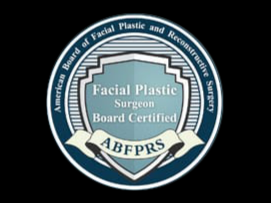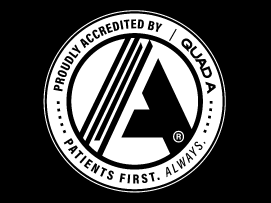Double Chin vs. Neck Fat: When Liposuction Isn't Enough
"Can't you just suck out the fat under my chin?" It's one of the most common questions I hear in my Brentwood practice, and I understand entirely why patients ask it. When you're bothered by fullness under your chin, it seems logical that removing fat would solve the problem. But as a fellowship-trained facial plastic surgeon, I can tell you that the neck area is far more complex than it appears – and sometimes what looks like a simple fat problem actually requires a more comprehensive surgical approach.
Not All Neck Problems Are Created Equal
When patients come to me concerned about their "double chin," they're often surprised to learn that what they're seeing in the mirror might not be just excess fat. The neck and lower face area involves multiple layers – skin, fat, muscle, and deeper structures – and aging affects all of them differently.
Understanding the difference between various neck concerns is crucial because it determines what treatment will actually work. I've seen too many patients spend thousands of dollars on treatments that were never going to address their real problem, simply because they didn't understand what was causing their concern in the first place.
Let me walk you through what I see when I evaluate the neck area, and help you understand when simple fat removal will work – and when it won't.
The Anatomy of Neck Aging
What's Really Under There
Your neck contains several distinct layers that all contribute to its appearance:
- Skin that can become loose and wrinkled
- Superficial fat just under the skin
- Deeper fat compartments that can bulge as we age
- Platysma muscle that can separate and band
- Deeper muscles and structures that provide support
When we're young, all these layers work together to create a smooth, defined jawline and neck contour. As we age, each layer can develop its own problems, and that's where treatment becomes more complex than just "removing fat."
The Double Chin vs. Aging Neck Dilemma
What many people call a "double chin" could actually be several different issues:
- Submental fat (true double chin fat)
- Loose neck skin creating folds
- Muscle banding in the neck
- Loss of jawline definition
- Combination of multiple factors
Each of these problems requires a different solution, and that's why a thorough evaluation is so important.
When It Really Is Just Fat
The True Double Chin Candidate
Some patients do have isolated submental fat that responds beautifully to liposuction or non-surgical fat removal treatments. These are typically:
- Younger patients (usually under 40) with good skin elasticity
- People with localized fat deposits but no muscle or skin laxity
- Patients with strong jawlines and good bone structure
- Those with minimal neck aging overall
What Simple Fat Removal Can Achieve
When you're a good candidate for fat-only treatments, the results can be dramatic. I've seen patients transform their profile with targeted liposuction, and they're thrilled with the outcome. The recovery is relatively quick, and the results look natural and long-lasting.
When Fat Removal Falls Short
The Skin Factor
Here's where many patients run into trouble: they assume removing fat will automatically tighten loose skin. Unfortunately, that's not how it works. If you have significant skin laxity in the neck area, removing fat can actually make things worse by creating more loose skin with nothing to fill it.
I've had patients come to me after liposuction elsewhere, frustrated that they still don't have the defined jawline they wanted. The fat removal was technically successful, but it didn't address the skin laxity that was contributing to their concern.
The Muscle Problem
As we age, the platysma muscle in our neck can develop vertical bands or separate in the middle, creating that "turkey neck" appearance. No amount of fat removal will fix muscle banding – it requires surgical muscle repair to create a smooth neck contour.
The Support Structure Issue
Sometimes what looks like fat is actually the loss of deeper support structures that used to keep everything lifted and tight. When these supports weaken, tissues descend and create fullness that looks like fat but is actually displaced tissue.
Red Flags That Suggest You Need More Than Liposuction
Skin That Doesn't Bounce Back
During your consultation, I'll do a simple test – gently lifting the skin under your chin to see how much improvement that creates. If lifting the skin dramatically improves your profile, you likely need skin removal or tightening, not just fat removal.
Visible Muscle Bands
If you can see vertical bands in your neck when you tense your muscles or look down, fat removal alone won't address this. Those bands need to be surgically corrected for optimal results.
Jowling and Jawline Loss
When the problem extends beyond the area directly under your chin to include jowling along the jawline, you're dealing with more comprehensive facial aging that requires a more comprehensive solution.
The "Wattle" Effect
If you have loose skin that hangs or folds in the neck area, removing fat will only make this more apparent. This excess skin needs to be surgically removed and the remaining skin tightened.
The Neck Lift Solution
What a Neck Lift Actually Addresses
A properly performed neck lift can address all the issues that contribute to neck aging:
- Remove excess fat through liposuction
- Tighten loose skin by removing excess and repositioning what remains
- Repair muscle bands by suturing the platysma muscle back together
- Redefine the jawline by lifting and securing deeper tissues
Why Comprehensive Approach Works Better
Rather than addressing one problem and hoping it fixes everything, a neck lift addresses all the contributing factors at once. This typically leads to more dramatic, natural-looking, and longer-lasting results.
The Deep Plane Advantage
Using advanced deep plane techniques, I can create more natural, longer-lasting neck lift results. This approach addresses the deeper support structures, not just the surface issues, which is especially important in the neck area.
Age and Treatment Considerations
The 40s: When Prevention Meets Reality
In your 40s, you might be dealing with early fat accumulation under the chin but still have good skin elasticity. This is often the sweet spot for less invasive treatments, but it's also when some people start needing surgical intervention if there's significant genetic predisposition to neck aging.
The 50s and Beyond: When Surgery Makes Sense
By your 50s, most patients who are bothered by their neck area will benefit more from surgical correction than from fat removal alone. The skin typically doesn't have enough elasticity to contract properly after fat removal, and muscle changes become more apparent.
Individual Variation
I've seen 35-year-olds who need full neck lifts due to genetics or significant weight loss, and 60-year-olds who are good candidates for simple liposuction. Age is just one factor – your individual anatomy matters more.
The Consultation Process
What I Evaluate
During your consultation, I'll assess:
- Skin quality and elasticity in the neck area
- Amount and location of excess fat
- Muscle tone and any banding
- Jawline definition and support
- Overall facial harmony and balance
The Honest Conversation
I believe in having frank discussions about what each treatment can and can't achieve. If liposuction alone will give you the results you want, I'll tell you that. If you need more comprehensive surgery for optimal results, I'll explain why and show you what to expect.
Setting Realistic Expectations
One of the most important parts of the consultation is making sure you understand what's realistic for your situation. Sometimes patients need to adjust their expectations, and sometimes they're pleasantly surprised by what's possible.
Combining Treatments for Optimal Results
The Staged Approach
Sometimes I recommend a staged approach – starting with less invasive treatments and seeing how much improvement we can achieve before considering surgery. This works well for patients who are on the borderline between needing surgical and non-surgical treatment.
Surgical Plus Non-Surgical
For comprehensive neck rejuvenation, I often combine surgical correction of major issues (skin, muscle) with non-surgical treatments for fine-tuning (skin tightening, texture improvement).
Timing Considerations
The timing of treatments matters. For example, if you're going to need a neck lift eventually, it might make sense to wait rather than spending money on temporary solutions that won't address the underlying problem.
Common Misconceptions About Neck Treatments
"Liposuction Will Tighten My Skin"
This is probably the biggest misconception I encounter. Liposuction removes fat but doesn't tighten skin. In fact, it can make loose skin more apparent. Some devices combine liposuction with skin tightening, but the tightening effect is modest.
"Non-Surgical Treatments Are Always Better"
Non-surgical treatments are wonderful for the right candidates, but they can't achieve the same results as surgery when significant changes are needed. Sometimes surgery is actually the more conservative choice because it provides definitive results rather than requiring repeated treatments.
"Recovery From Neck Surgery Is Terrible"
Modern neck lift techniques have much more manageable recovery than patients expect. Most people are back to normal activities within 1-2 weeks, and the improvement in confidence often outweighs the temporary inconvenience.
"Results Look Unnatural"
When performed by an experienced facial plastic surgeon using current techniques, neck lifts create very natural results. The goal is to restore what you had when you were younger, not create something that was never there.
Nashville Lifestyle Considerations
Climate and Healing
Tennessee's humidity can actually be beneficial for healing after neck procedures, but sun protection is crucial. I always discuss how our local climate affects recovery and long-term care of your results.
Professional Considerations
Many of my Nashville patients are concerned about downtime for professional obligations. We carefully plan timing around important work events, and I provide guidance on how to minimize visible signs of recovery.
Active Lifestyle Factors
The active outdoor lifestyle that many Tennesseans enjoy can contribute to neck aging through sun exposure, but it also means patients tend to heal well and maintain their results through healthy living.
Making the Right Choice for You
Questions to Ask Yourself
- How long have you been bothered by your neck area?
- Have you tried non-surgical treatments without satisfaction?
- Are you looking for subtle improvement or dramatic change?
- What's your timeline and budget for treatment?
- How important is minimizing downtime?
Red Flags in Treatment Recommendations
Be wary of providers who:
- Promise that one treatment will fix all neck issues
- Don't thoroughly evaluate your individual anatomy
- Push expensive packages of non-surgical treatments
- Don't discuss surgical options when they might be more appropriate
- Can't explain why they're recommending a specific approach
The Investment Perspective
Cost Considerations
While surgical neck improvement costs more upfront than non-surgical treatments, it often provides better value over time. Multiple sessions of non-surgical treatments can add up to more than the cost of surgery, with less dramatic results.
Longevity of Results
A well-performed neck lift typically lasts 10-15 years, while non-surgical treatments usually need to be repeated annually or every few years. Factor in the long-term costs when making your decision.
Quality of Life Impact
Many patients tell me their neck lift was one of the best investments they ever made – not just financially, but in terms of confidence and quality of life. When you feel good about your appearance, it affects every aspect of your life positively.
Frequently Asked Questions
How do I know if I need surgery or just fat removal?
The best way is through a consultation with a qualified facial plastic surgeon who can evaluate all the factors contributing to your neck concerns. Photos can be misleading – a hands-on evaluation is essential.
Can I try non-surgical treatments first?
Absolutely, and sometimes I recommend this approach. However, if I can tell that non-surgical treatments won't give you the results you want, I'll be honest about that upfront to save you time and money.
What if I'm not ready for surgery?
That's completely understandable. We can discuss non-surgical options that might provide some improvement while you consider your options, or we can plan surgery for a time that works better for your schedule.
Taking the Next Step
The most important thing is to get an accurate diagnosis of what's actually causing your neck concerns. Whether it's simple fat that can be addressed with liposuction, complex aging that requires surgical correction, or something in between, the right treatment plan starts with the right evaluation.
Don't waste time and money on treatments that aren't designed to address your specific anatomy and concerns. A comprehensive consultation will give you clarity on your options and help you make the best decision for your goals and lifestyle.
Ready for Answers?
At Guthrie Facial Plastic Surgery in Brentwood, I specialize in comprehensive facial and neck rejuvenation using the most advanced techniques available. Whether you need simple fat removal or complex reconstructive surgery, my goal is to help you achieve natural, beautiful results that enhance your confidence and quality of life.
Schedule your consultation today by calling 615-880-9500. Let's determine together what's really causing your neck concerns and develop a treatment plan that will give you the results you're looking for.
Don't let confusion about treatment options keep you from getting the neck contour you want – expert evaluation and honest recommendations are just a consultation away.
About the Author: Dr. Ashley Guthrie is a fellowship-trained, double board-certified facial plastic and reconstructive surgeon practicing in Brentwood, Tennessee. She specializes in advanced neck lift techniques and comprehensive facial rejuvenation, helping patients achieve natural, long-lasting results through personalized surgical and non-surgical treatments.
Disclaimer:
This article is for informational purposes only and is not a substitute for professional medical advice, diagnosis, or treatment. Individual anatomy varies significantly, and treatment recommendations should be based on personal consultation and examination. Not everyone is a candidate for surgical or non-surgical neck treatments. Always seek the advice of qualified healthcare providers regarding your specific medical situation and cosmetic goals. Before and after photos represent individual results and do not guarantee similar outcomes for all patients.






